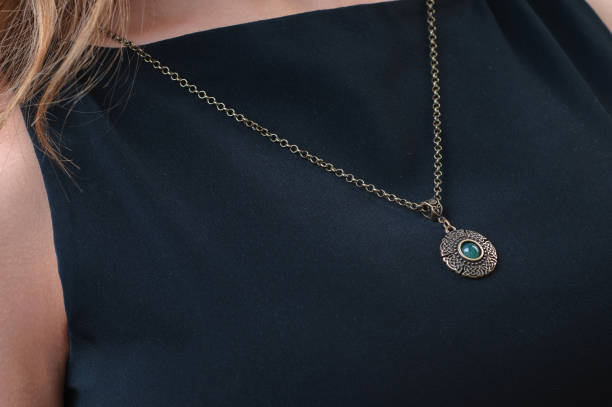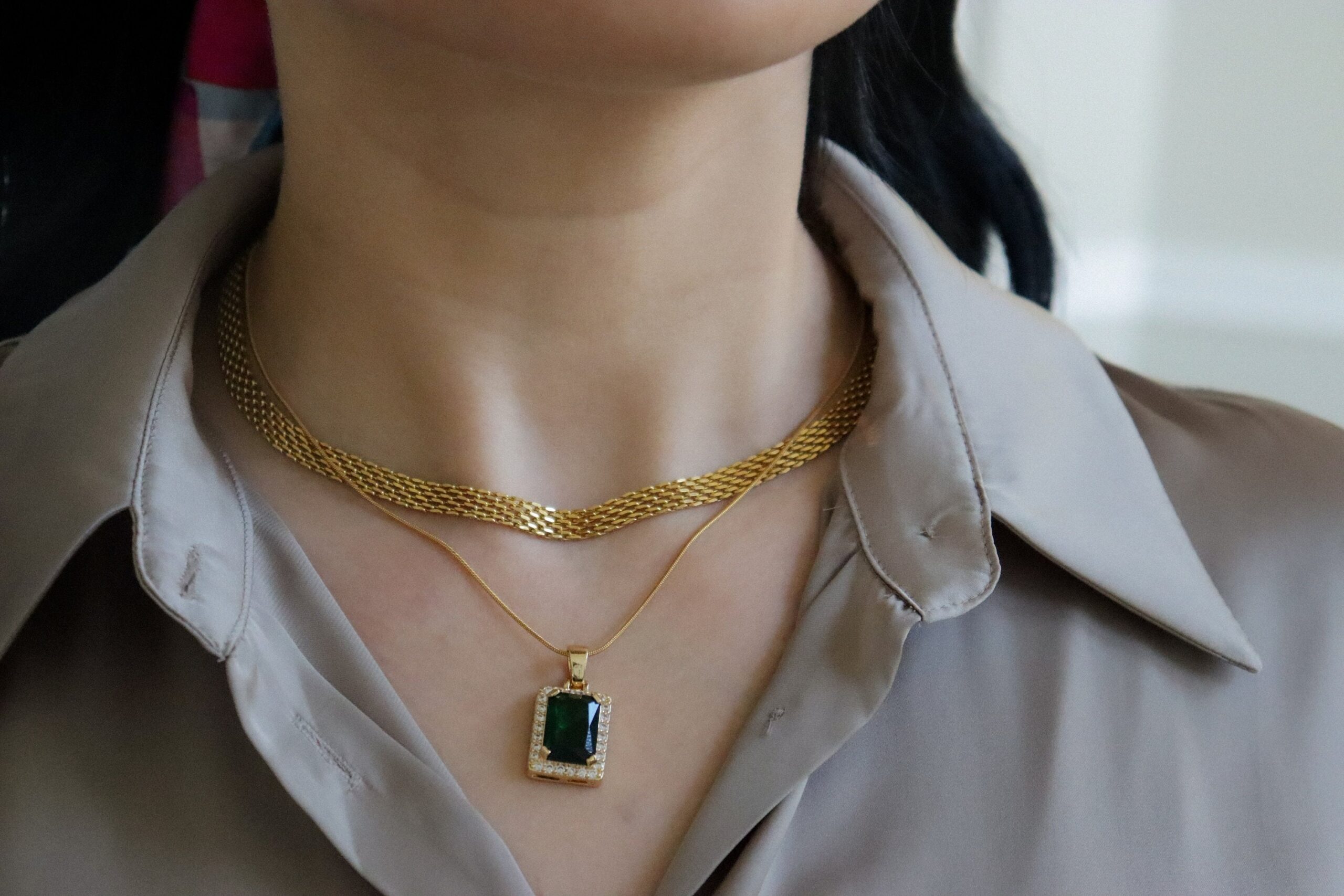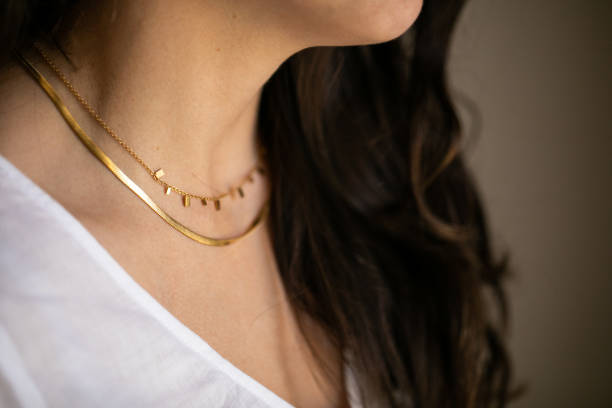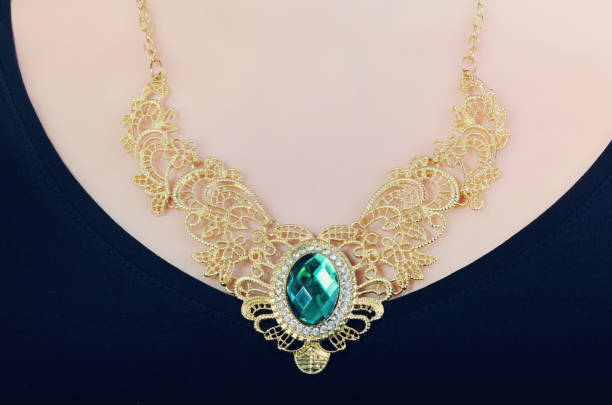
How to Identify and Authenticate Vintage 18k Gold Jewelry
Ever stumbled upon an old jewelry box at a flea market and found a stunning 18k gold necklace womens item? You probably wondered, “Is this the real deal?” Vintage 18k gold jewelry has a charm that’s hard to resist, but identifying and authenticating it can be as tricky as a cat in a room full of rocking chairs.
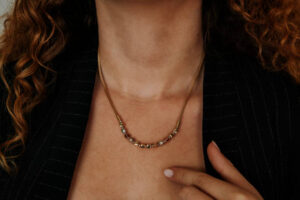
Check the Stamps and Hallmarks
First things first, let’s talk about those tiny stamps and hallmarks. Have a good look with a magnifying glass. Any authentic 18k gold piece should have a hallmark indicating its gold content. Look for markings like “18k” or “750”. These numbers mean the same thing—75% pure gold. But beware: counterfeiters can fake these marks, too.
Color and Weight: Feel the Gold
Gold has a distinct color and heft to it. True 18k gold will have a rich, warm yellow shade. It shouldn’t look brassy or overly shiny. If it’s an 18k gold necklace and feels feather-light, that’s a red flag. Gold is dense, and a piece with significant weight indicates a higher likelihood of authenticity.
Bite Test: Not Just for Pirates
Ever heard of the bite test? It sounds like something out of a pirate movie, but it’s old-school and effective. Real gold is soft, so if you bite down gently, you should see a small indentation. But don’t go chomping down too hard—we’re authenticating jewelry, not eating it!
Magnet Test: A Simple Trick
Here’s a quick one you can do at home: the magnet test. Pure gold isn’t magnetic. Get a strong magnet and see if your piece is attracted to it. If it sticks, it’s time to raise an eyebrow. However, some metals that fake gold is mixed with aren’t magnetic either, so it’s not foolproof but definitely a starting point.
Acid Test Kits: DIY Detective Work
If you want to play detective, acid test kits are available online. With a bit of training, you can use these kits to determine gold purity. A tiny scratch on the piece is exposed to different acid solutions. Depending on the reaction, you can estimate the gold content. Be cautious though—this method can leave marks on your jewelry.
Consult a Professional
While DIY methods can get you far, taking your piece to a jeweler for a professional appraisal is often worth it. A trained expert can use specialized equipment and techniques to give you definitive answers. The fee is typically modest, particularly if the piece turns out to be valuable.
Understand the Craftsmanship
Vintage pieces often tell a story through their craftsmanship. Examine the details. Is the piece well-made with intricate designs? The quality of craftsmanship can give you clues. Shoddy workmanship often accompanies fake gold because, let’s face it, scammers are usually cutting corners.
Check for Wear and Tear
Look closely at high-wear areas. If the gold has worn off to reveal a different metal underneath, you’ve got a gold-plated item. Solid 18k gold pieces may have scratches, but the color will be consistent all the way through.
Tips for Caring for and Restoring Vintage 18k Gold Necklaces
An 18k gold necklace womens piece is not just a mere accessory. It’s a timeless memento, a dash of elegance passed through generations, carrying whispers of history. When you inherit such a piece, the first thing you notice might be its slightly tarnished charm. But don’t worry, there’s no need to hand it over to professionals straight away. Much of that luster can be revived with a bit of elbow grease and a few handy tips.
First and foremost, let’s tackle how you can clean your treasured necklace at home. Grab a small bowl and mix a few drops of mild dish soap with warm water. You don’t need a fancy concoction—just soap and water will do. Gently immerse the necklace and let it soak for about 15 minutes. Meanwhile, you can chat about the good old days with your grandma or watch some cat videos. After soaking, fetch a soft toothbrush, like the one your kids use, and gently scrub the necklace. You don’t need to put your back into it; just easy, circular motions will work like a charm. Rinse it thoroughly under lukewarm water and pat it dry with a soft cloth. Voila! You’re already halfway to restoring its former glory.
Next, let’s tackle those stubborn spots that seem to cling to your necklace like an annoying friend who overstays their welcome. If the soft soap didn’t quite do the trick, a gentle baking soda paste might come to your rescue. Sprinkle some baking soda into a bowl and add just enough water to make a paste. Apply it sparingly to the stubborn spots and rub gently with your fingers or that soft-bristled toothbrush. With a bit of patience, you’ll see those spots waving the white flag in no time.
Now, lemon juice and olive oil sound like the start of a salad dressing but hold on to your croutons. This combo can also help restore your necklace’s shine. Mix one part lemon juice with two parts olive oil, dip a cloth into the mixture, and lightly rub the necklace. Give it a good rinse afterward, and you’ll see it sparkling like sunshine.
While DIY methods are stellar, sometimes the necklace may demand the touch of a professional jeweler. It’s like when you tried fixing that leaky tap and ended up flooding the kitchen—sometimes, experts save the day. Look for a reputable local jeweler to handle repairs, especially if they involve delicate or intricate work. They have the tools and know-how to fix clasps, reattach links, and even reshape parts that have bent over time.
One thing to remember: storing your 18k gold necklace correctly is just as important as cleaning it. You wouldn’t toss a priceless painting in the garage, right? Get a jewelry box with individual compartments or use soft cloth pouches to keep your necklace safe from scratches. A little silica gel packet can go a long way to absorb moisture and keep the piece from tarnishing again.
